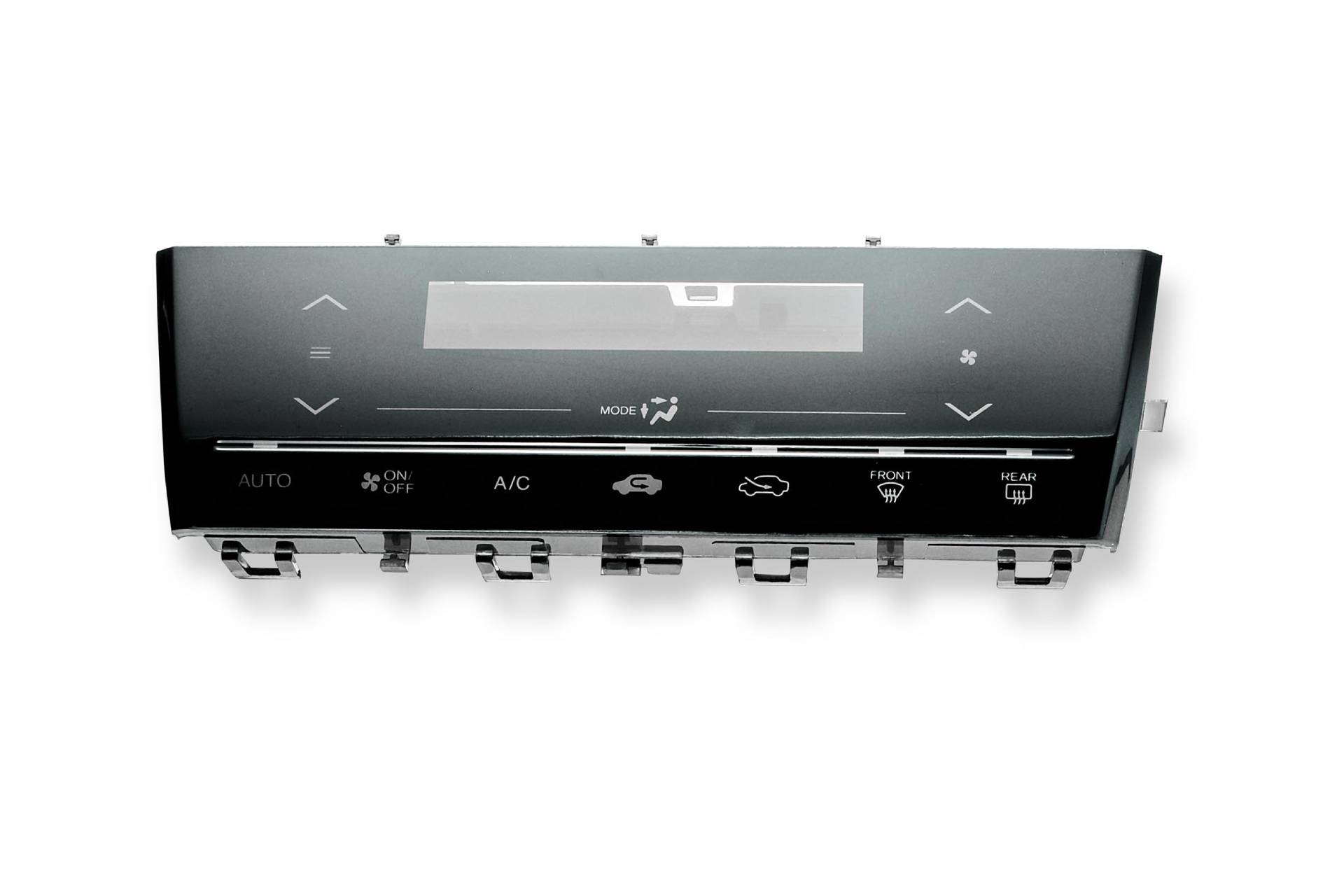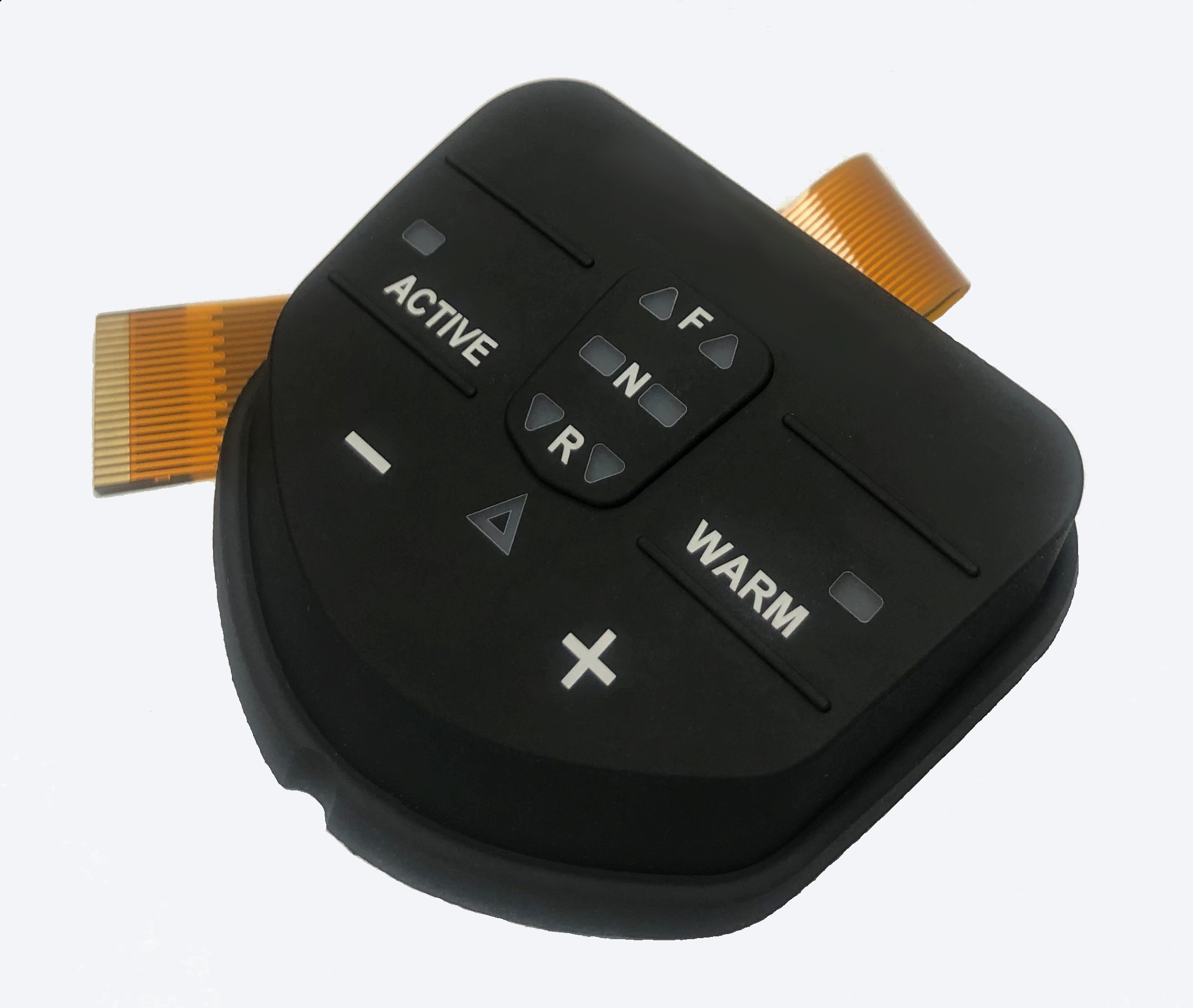Checking Out the Manufacturing Refine Behind Rubber Keypads and Their Significance in Modern Tools
Rubber keypads are crucial in the functionality of contemporary tools. Their production procedure entails cautious choice of products and specific methods. Keypads are created to boost individual communication while making sure resilience and reliability. Comprehending exactly how these elements are made reveals their importance across numerous applications. What elements add to their effectiveness, and how do these elements influence user experience? The responses may improve understandings of this daily innovation.
Introduction of Rubber Keypads and Their Applications

Rubber keypads are flexible parts widely utilized in numerous electronic gadgets, ranging from customer electronic devices to industrial equipment. Their style enables a tactile response, making them a suitable selection for applications calling for customer communication. Frequently found in products such as remote controls, calculators, and medical devices, rubber keypads help with simplicity of usage and access.
In industrial setups, they serve vital functions in machinery and control board, where toughness and resistance to environmental variables are important. The non-slip surface area enhances hold, advertising reliability in requiring problems. Additionally, their lightweight nature and adjustable shapes allow producers to develop tailored solutions that fit specific demands. With innovations in modern technology, rubber keypads remain to advance, including functions like backlighting and improved level of sensitivity. Overall, their versatility and useful benefits contribute significantly to the efficiency of various tools across several markets.
Products Used in Rubber Keypad Manufacturing
Keypad manufacturing relies on a selection of products that enhance both functionality and sturdiness. The key product made use of in the manufacturing of rubber keypads is silicone rubber, known for its outstanding strength and flexibility. This material allows keypads to stand up to duplicated pushing without shedding shape or efficiency. Furthermore, thermoplastic elastomers (TPE) are commonly made use of as a result of their simplicity of molding and ability to supply a soft-touch feeling.
Tinting representatives, such as pigments, are incorporated to assure vibrant, lasting hues that boost aesthetic appeal. Ingredients like anti-UV agents and fire resistants might be mixed into the rubber to boost climate resistance and safety compliance. The selection of products directly influences the keypad's responsive reaction, durability, and general performance in numerous tools. Inevitably, the mindful selection of these components is vital for the production of high-grade rubber keypads that satisfy consumer and market demands.
The Design Process of Rubber Keypads
When developing rubber keypads, the layout procedure plays a necessary function in figuring out capability and user experience. Designers start by specifying the keypad's planned usage, thinking about aspects such as the tool it will come with and the target individual group. This preliminary stage includes mapping out designs that prioritize ergonomic facets, making sure the keys are easily available and appropriately spaced.
Next off, designers focus on the responsive feedback desired from the keypads, which affects the option of materials and crucial forms. Prototyping is crucial in this phase, enabling designers to examine various designs for convenience and responsiveness.
Production Techniques for Rubber Keypads
The production procedure for rubber keypads includes a series of precise techniques that guarantee quality and functionality. Originally, liquid silicone rubber (LSR) is frequently made use of as a result of its longevity and flexibility. The procedure starts with blending the raw products, including silicone, colorants, and treating representatives. This combination is after that injected right into mold and mildews designed to form the keypads precisely.
Complying with injection, the shaped keypads undertake treating, a home heating process that solidifies the product (Rubber Keypads). This is typically done in a press, making sure the keypads attain the preferred hardness and strength

Quality Assurance Steps in Production
To ensure that rubber keypads satisfy high criteria of quality and functionality, extensive quality assurance actions are implemented throughout the production process. These steps begin with raw material inspection, making sure that just the highest-grade elastomers are made use of. During the manufacturing phase, operators carry out regular checks to monitor criteria such as temperature level, stress, and mixing times, essential for accomplishing constant product quality.
Post-production, each batch of keypads undertakes thorough screening, including responsive feedback evaluations and longevity tests to examine performance under various conditions. Aesthetic evaluations are also performed to recognize any kind of issues, such as bubbles or disparities in texture. Additionally, compliance with industry requirements is verified, making certain that the keypads satisfy safety and functionality criteria.
The Duty of Innovation in Keypad Development
Modern technology plays an important role in the development of rubber keypads by enabling innovative manufacturing methods that enhance accuracy and efficiency. Additionally, ingenious material selection permits for enhanced longevity and responsiveness in keypad efficiency. These developments not just improve manufacturing however also raise the total top quality of the final product.
Advanced Manufacturing Techniques
Developments in manufacturing techniques revolutionize the production of rubber keypads, boosting both effectiveness and accuracy. Technologies such as injection molding and 3D printing have actually changed traditional processes, allowing producers to develop intricate designs with lowered waste and improved turnaround times. Automation plays Read Full Report a vital role in this development, improving production line and reducing human error. In addition, computer-aided layout (CAD) software application permits complex personalization, guaranteeing that keypads satisfy certain customer needs. Quality assurance actions have actually additionally advanced, incorporating real-time tracking systems that detect flaws early in the manufacturing cycle. These developments not only enhance the longevity and functionality of rubber keypads however additionally support the expanding demand for personalized remedies in numerous industries, from consumer electronics to automotive applications.
Innovative Product Option
The advancement of manufacturing strategies has led the way for cutting-edge product choice in rubber keypad development. Breakthroughs in polymer scientific research have presented products that enhance sturdiness, flexibility, and responsive comments. Suppliers now utilize thermoplastic elastomers (TPE) and silicone compounds, which provide exceptional resistance to put on and ecological variables. These materials permit for the creation of keypads that can sustain long term use while have a peek at this website maintaining visual appeal. Additionally, the integration of finishings and additives enhances functionality, such as enhancing grasp and lowering rubbing. The option of materials is important, as it directly influences the efficiency and longevity of keypads in numerous gadgets, from customer electronics to industrial equipment. This cutting-edge method remains to form the future of keypad design and use.
The Effect of Rubber Keypads on Customer Experience
Rubber keypads significantly affect user experience via their improved responsive response, which allows for even more specific interaction. Furthermore, their durability and long life add to constant efficiency in time, lowering the need for constant substitutes. This combination of attributes makes rubber keypads a recommended choice in different applications, inevitably influencing user satisfaction.
Improved Tactile Reaction
Enhancing tactile reaction greatly influences individual experience, particularly in devices that count on keypads for interaction. Rubber keypads offer a distinct combination of gentleness and resilience, enabling individuals to feel distinctive comments with each press. This feedback enhances a sense of control and accuracy, critical in applications varying from smart devices to commercial tools. Individuals commonly report better contentment and effectiveness when interacting with tools that feature well-designed rubber keypads, as they help with quicker and extra accurate input. In addition, the ergonomic design of these keypads can reduce finger tiredness, advertising longer usage durations without discomfort. In general, the boosted responsive reaction provided by rubber keypads significantly adds to a much more enjoyable and intuitive individual experience in modern-day innovation.
Resilience and Longevity
An essential aspect of user experience with rubber keypads lies in their toughness and durability. These keypads are developed to hold up against comprehensive use, standing up to deterioration that typically impacts various other products. The durable nature of rubber warranties that keypads preserve their performance and appearance with time, which is vital for tools often made use of in various atmospheres. Individuals gain from the reliability of rubber keypads, as they can endure direct exposure to moisture, temperature, and dust changes without degrading. This strength not just boosts individual complete satisfaction but additionally minimizes the demand for regular substitutes, inevitably adding to cost-effectiveness for suppliers. Essentially, the resilience of rubber keypads substantially affects the general performance and customer experience in modern devices.
Frequently Asked Concerns
For How Long Do Rubber Keypads Typically Last in Tools?
Rubber keypads generally last in between 5 to 10 years, relying on use, ecological variables, and high quality see this site of materials used (Rubber Keypads). Normal deterioration can shorten their life expectancy, affecting performance and customer experience with time
Can Rubber Keypads Be Customized for Details Applications?
Rubber keypads can certainly be tailored for particular applications, allowing modifications in dimension, appearance, color, and shape. This versatility enables manufacturers to develop tailored options that satisfy varied user needs and improve functionality in various gadgets.
Are Rubber Keypads Eco-friendly?
Rubber keypads are often ruled out environmentally pleasant due to their petroleum-based materials. Advancements in lasting manufacturing techniques and the advancement of bio-based options are slowly boosting their ecological influence in various applications.
What Prevail Problems Faced During Rubber Keypad Production?
Common issues encountered throughout rubber keypad production include irregular material high quality, mold and mildew defects, improper curing times, attachment failures, and challenges in accomplishing precise tactile comments. These problems can bring about reduced product performance and client frustration.
How Do Rubber Keypads Compare to Various Other Types of Trick Switches Over?
Rubber keypads supply a softer feeling and quieter procedure contrasted to mechanical switches, which provide responsive comments. Nonetheless, rubber keypads may wear faster and lack the precision that some individuals like in high-performance applications.
The primary material utilized in the manufacturing of rubber keypads is silicone rubber, recognized for its exceptional strength and adaptability. When producing rubber keypads, the design procedure plays a necessary role in identifying performance and individual experience. Rubber keypads substantially affect customer experience via their improved responsive response, which allows for more accurate communication. Individuals typically report better satisfaction and efficiency when engaging with gadgets that feature properly designed rubber keypads, as they facilitate quicker and more exact input. An essential aspect of customer experience with rubber keypads lies in their toughness and long life.